-
How to run a long way, properly!
follow brad pamp's five step training model towards 'your' best performance.


WHY RUN?
Why Run?
Running means to move, usually forward, with both feet off the surface at one point within the ‘running’ stride.
One can 'run' at 6kph, or, clock up to 36kph. Ultimately, again, if you're capable of coordinating both feet floating for a brief moment within the stride, you've got the skill set required to run.
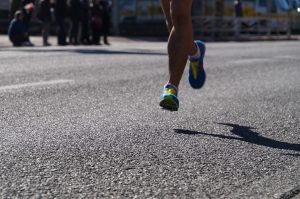
Humans were born to run over a lifetime. Our 'healthy' joints, namely; ankles, knees & hips, are so designed and coordinated, they allow running at varying pace & distances. Our ability to burn stored fat for sustained energy and our self-cooling sweating system confirms our talent for running a long way.
Here's what you can expect when employing ‘your’ ideal running; intensity, technique, distance, and consistency;
☑ Maintain & improve your healthy cardiovascular/ pulmonary system.
☑ Lead to holding your ideal weight & shape for life, free from stress & calculations.
☑ Maintain your best skeletal functional strength for a lifetime.
☑ De-age your nervous system, driving your principal balance & coordination.
☑ Research proves rhythmic running could well be the number one (bio-chemical) de-stressor.
☑ Always be free $, and,
☑ Allow action; indoors, outdoors, in the cold, in heat, in the rain, and while listening to tunes.
For mine, whether you choose to run for better health or improved performance, it's the balancing of the mindset following a run that is all-omnipotent. The world is a better place!
Finally, employing BP’s five-step model, regardless of your 'starting' talent, will have you;
☺ Enjoying running and the developing process.
☺ Free from running-related injury or pain, and,
☺ Motivated for a lifetime of running (at whatever pace or interest), as nature intended.
Why Run?
Running means to move, usually forward, with both feet off the surface at one point within the ‘running’ stride.
One can 'run' at 6kph, or, clock up to 36kph. Ultimately, again, if you're capable of coordinating both feet floating for a brief moment within the stride, you've got the skill set required to run.
Humans were born to run over a lifetime. Our 'healthy' joints, namely; ankles, knees & hips, are so designed and coordinated, they allow running at varying pace & distances. Our ability to burn stored fat for sustained energy and our self-cooling sweating system confirms our talent for running a long way.
Here's what you can expect when employing ‘your’ ideal running; intensity, technique, distance, and consistency;
☑ Maintain & improve your healthy cardiovascular/ pulmonary system.
☑ Lead to holding your ideal weight & shape for life, free from stress & calculations.
☑ Maintain your best skeletal functional strength for a lifetime.
☑ De-age your nervous system, driving your principal balance & coordination.
☑ Research proves rhythmic running could well be the number one (bio-chemical) de-stressor.
☑ Always be free $, and,
☑ Allow action; indoors, outdoors, in the cold, in heat, in the rain, and while listening to tunes.
For mine, whether you choose to run for better health or improved performance, it's the balancing of the mindset following a run that is all-omnipotent. The world is a better place!
Finally, employing BP’s five-step model, regardless of your 'starting' talent, will have you;
☺ Enjoying running and the developing process.
☺ Free from running-related injury or pain, and,
☺ Motivated for a lifetime of running (at whatever pace or interest), as nature intended.
WHAT YOU CAN EXPECT
The Training Model
Phase One – Building your Aerobic Capacity.
Who: Everyone. From the Olympic Champion to First-Timer taking up running to improve their wellness.
Your aerobic capacity is the intensity (effort) your metabolism switches from burning stored fat as it’s preferred energy source to favour available, and limited, sugar. Once this change happens, your running output and performance are short-lived.

Our goal is to have you run harder, longer and faster while favouring stored fat as your primary fuel source.
The better your ability to intake, transport and utilise oxygen, the better your capacity to metabolise stored fat as your preferred fuel source.
Your genetics, athletic history, your food choices, and your training intensity can dictate your aerobic capacity.
The reason we take time in boosting your aerobic capacity is, to;
☑ Avoid running-related injuries,
☑ Lower collective inflammation, and again, limit running-related pain & discomfort.
☑ Boost recovery time from session to session
☑ Promote running enjoyment
☑ Naturally, drive towards your ideal weight & shape for both your running performance and your lifestyle.
And of course,
☑ Elevate your running talent – particularly finishing your longer races holding your best pace.
Most people run far too hard relative to their current aerobic capacity, too early.
Your ‘starting’ ideal fat-burning (aerobic) zone is calculated using the LAM (Lifestyle Analysis Method) system, featured in step three. Your fat-burning aerobic ‘zone’ will be represented through your heart rate in beats per minute. You will need a heart rate monitor to accurately police your ‘best’ zone.
Your ideal aerobic capacity building zone is called your Default Training Intensity (DTI).
The key feature to Brad Pamp’s training model is your time spent in your fat-burning aerobic zone (DTI) – and, over time, running, healthy, further and faster in this zone.
PhaseTwo – Fine-tuning your most efficient running technique.
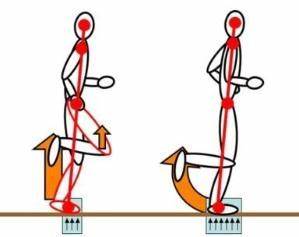
Who: Everyone, well, mostly everyone.
The average person will take about 8,700 strides to complete 10kms.
With such a repeated action, reducing the enduring physiological stress becomes key.
Lowering the cost of impact is paramount towards reaching your best performance.
Failure to address smoothing out your running technique usually ends in injury, frustration, and ultimately a sub-optimal performance.
There are four key phases to the running stride. Each phase can be practised with improved precision and efficiency.
Using training technique strategies is a great way to reduce the cost of impact.
Determining your ideal running cadence and practising this tempo will significantly boost your running skills and enjoyment.
Most people overstride with an inefficient slower cadence driving up the cost of impact! This usually leads to a slower pace, injuries, and running disappointment.
Practising your ideal running cadence in your fat-burning DTI zone will see your running talent skyrocket.
Check out the linked video series in step four.
Phase Three – Building your Functional Running Strength.
Who: Everyone.
Running is a weight-bearing action. Appropriate and fitting bone, joint, muscle & tendon strength is critical for future running enjoyment and optimal performance.
Time spent in your fat-burning zone, running at your ideal cadence, slowly increasing miles, introducing hill  repeats, barefoot running, and time-honoured running-related resistance exercises will boost and hone your functional running strength.
repeats, barefoot running, and time-honoured running-related resistance exercises will boost and hone your functional running strength.
Let time and the structure of your program develop your rock hard running strength.
Running strength training prevents;
✓ Ankle sprains
✓ Achilles tendonitis
✓ Calf strains
✓ Shin splints
✓ Knee pain
✓ Quad tears
✓ Hamstring insertion pain, and,
✓ Lower back pain
Many running-related injuries are a result of poorly trained weak body parts. Increasing intensity and volume before the body has developed sufficient strength usually ends in tears.
Phase Four – Elevating up your aerobic threshold.
Who: About 30% of runners.

Only now after practising the first 3 phases (and testing your improvement along the way) is your body ready for harder, faster, and more intense training.
Once your body is ready and tolerant of harder interval-based training, training will feature intensity over and above your DTI - for a set period of time.
How do we know you’re ready for some >DTI ‘track’ work?
✓ Your weekly timetrial test (TTT) has improved by more than 8%,
✓ You're comfortably holding at your ideal weight,
✓ You are relatively injury-free,
✓ You’re not craving sugar,
✓ You’re sleeping soundly,
✓ You’re looking forward to your next training session, and,
✓ You’re scoring 10/10 in the Running Quiz Score.
What is interval-based phase four training?
You are running over and above your DTI for a set period. You will experience a burning sensation in your lungs and muscles, and maybe experience a metallic taste at the base of your tongue.
>DTI training will improve your ability to;
✓ Avoid producing lactic acid – a result of improving your oxygen utilisation at a harder output.
✓ Buffer lactic acid – improving circulation.
✓ Mentally dissociate from pain and discomfort.
>DTI training is not for everyone. Time and testing will let us know if this training is appropriate for you.
The Training Model
Phase One – Building your Aerobic Capacity.
Who: Everyone. From the Olympic Champion to First-Timer taking up running to improve their wellness.
Your aerobic capacity is the intensity (effort) your metabolism switches from burning stored fat as it’s preferred energy source to favour available, and limited, sugar. Once this change happens, your running output and performance are short-lived.
Our goal is to have you run harder, longer and faster while favouring stored fat as your primary fuel source.
The better your ability to intake, transport and utilise oxygen, the better your capacity to metabolise stored fat as your preferred fuel source.
Your genetics, athletic history, your food choices, and your training intensity can dictate your aerobic capacity.
The reason we take time in boosting your aerobic capacity is, to;
☑ Avoid running-related injuries,
☑ Lower collective inflammation, and again, limit running-related pain & discomfort.
☑ Boost recovery time from session to session
☑ Promote running enjoyment
☑ Naturally, drive towards your ideal weight & shape for both your running performance and your lifestyle.
And of course,
☑ Elevate your running talent – particularly finishing your longer races holding your best pace.
Most people run far too hard relative to their current aerobic capacity, too early.
Your ‘starting’ ideal fat-burning (aerobic) zone is calculated using the LAM (Lifestyle Analysis Method) system, featured in step three. Your fat-burning aerobic ‘zone’ will be represented through your heart rate in beats per minute. You will need a heart rate monitor to accurately police your ‘best’ zone.
Your ideal aerobic capacity building zone is called your Default Training Intensity (DTI).
The key feature to Brad Pamp’s training model is your time spent in your fat-burning aerobic zone (DTI) – and, over time, running, healthy, further and faster in this zone.
PhaseTwo – Fine-tuning your most efficient running technique.

Who: Everyone, well, mostly everyone.
The average person will take about 8,700 strides to complete 10kms.
With such a repeated action, reducing the enduring physiological stress becomes key.
Lowering the cost of impact is paramount towards reaching your best performance.
Failure to address smoothing out your running technique usually ends in injury, frustration, and ultimately a sub-optimal performance.
There are four key phases to the running stride. Each phase can be practised with improved precision and efficiency.
Using training technique strategies is a great way to reduce the cost of impact.
Determining your ideal running cadence and practising this tempo will significantly boost your running skills and enjoyment.
Most people overstride with an inefficient slower cadence driving up the cost of impact! This usually leads to a slower pace, injuries, and running disappointment.
Practising your ideal running cadence in your fat-burning DTI zone will see your running talent skyrocket.
Check out the linked video series in step four.
Phase Three – Building your Functional Running Strength.
Who: Everyone.
Running is a weight-bearing action. Appropriate and fitting bone, joint, muscle & tendon strength is critical for future running enjoyment and optimal performance.
Time spent in your fat-burning zone, running at your ideal cadence, slowly increasing miles, introducing hill  repeats, barefoot running, and time-honoured running-related resistance exercises will boost and hone your functional running strength.
repeats, barefoot running, and time-honoured running-related resistance exercises will boost and hone your functional running strength.
Let time and the structure of your program develop your rock hard running strength.
Running strength training prevents;
✓ Ankle sprains
✓ Achilles tendonitis
✓ Calf strains
✓ Shin splints
✓ Knee pain
✓ Quad tears
✓ Hamstring insertion pain, and,
✓ Lower back pain
Many running-related injuries are a result of poorly trained weak body parts. Increasing intensity and volume before the body has developed sufficient strength usually ends in tears.
Phase Four – Elevating up your aerobic threshold.
Who: About 30% of runners.

Only now after practising the first 3 phases (and testing your improvement along the way) is your body ready for harder, faster, and more intense training.
Once your body is ready and tolerant of harder interval-based training, training will feature intensity over and above your DTI - for a set period of time.
How do we know you’re ready for some >DTI ‘track’ work?
✓ Your weekly timetrial test (TTT) has improved by more than 8%,
✓ You're comfortably holding at your ideal weight,
✓ You are relatively injury-free,
✓ You’re not craving sugar,
✓ You’re sleeping soundly,
✓ You’re looking forward to your next training session, and,
✓ You’re scoring 10/10 in the Running Quiz Score.
What is interval-based phase four training?
You are running over and above your DTI for a set period. You will experience a burning sensation in your lungs and muscles, and maybe experience a metallic taste at the base of your tongue.
>DTI training will improve your ability to;
✓ Avoid producing lactic acid – a result of improving your oxygen utilisation at a harder output.
✓ Buffer lactic acid – improving circulation.
✓ Mentally dissociate from pain and discomfort.
>DTI training is not for everyone. Time and testing will let us know if this training is appropriate for you.
HOW IT WORKS!
How it Works!
Let’s say you’ve read through the why & what and you’re in!

Follow these ten steps
1. Find an Event.
2. Open & Return the (confidential) Lifestyle & Running Questionnaire.
3. Get yourself a heart rate monitor – you’ll need one.
4. I’ll email your first (4-week) block training schedule. Open it, Print it, Acknowledge it, manually.
5. Calculate your DTI (Default Training Intensity) – using the LAM (Lifestyle Analysis Method) – a short questionnaire scoring system. * This will give you your highest (starting) training intensity in beats per minute.
6. Design your weekly TimeTrial Test (TTT).
7. Start training.
8. Text BP (0412 487 034) your weekly TTT & Running Quiz Score (RQS) […/10] – E.g. ‘34.24 & 10/10’ – nothing more!
9. I’ll email your next training block on the last weekend of the scheduled training block – please confirm your understanding of the new training plan via email.
10. Contact me, Brad Pamp, via; email, text, or call if you’re up for a chat should you need further direction.
How it Works!
Let’s say you’ve read through the why & what and you’re in!

Follow these ten steps
1. Find an Event.
2. Open & Return the (confidential) Lifestyle & Running Questionnaire.
3. Get yourself a heart rate monitor – you’ll need one.
4. I’ll email your first (4-week) block training schedule. Open it, Print it, Acknowledge it, manually.
5. Calculate your DTI (Default Training Intensity) – using the LAM (Lifestyle Analysis Method) – a short questionnaire scoring system. * This will give you your highest (starting) training intensity in beats per minute.
6. Design your weekly TimeTrial Test (TTT).
7. Start training.
8. Text BP (0412 487 034) your weekly TTT & Running Quiz Score (RQS) […/10] – E.g. ‘34.24 & 10/10’ – nothing more!
9. I’ll email your next training block on the last weekend of the scheduled training block – please confirm your understanding of the new training plan via email.
10. Contact me, Brad Pamp, via; email, text, or call if you’re up for a chat should you need further direction.

CHOOSING YOUR EVENT - 5, 10, 14, 21.1, OR 42.2kms
Why Choose and Enter an Event?
✔ This makes it real, you're in!
✔ It gives us a programming date. An actual date we're working towards.
✔ Your guided program matches the event demands.
✔ A genuine purpose drives good behaviour - eg. fitting nutrition, prioritising recovery practice, and of course your continued training commitment, even when you don't feel like training.
✔ Parting with your hard-earned, letting your friends & family know you're in, this makes it tangible.
What event should you enter?
Check out 'Cool Running' for thousands of possible events - click>
Why Choose and Enter an Event?
✔ This makes it real, you're in!
✔ It gives us a programming date. An actual date we're working towards.
✔ Your guided program matches the event demands.
✔ A genuine purpose drives good behaviour - eg. fitting nutrition, prioritising recovery practice, and of course your continued training commitment, even when you don't feel like training.
✔ Parting with your hard-earned, letting your friends & family know you're in, this makes it tangible.
What event should you enter?
Check out 'Cool Running' for thousands of possible events - click>
LIFESTYLE/ TRAINING QUESTIONAIRE
[ninja_form id=4]
[ninja_form id=4]
HEART RATE MONITORS
Heart Rate Monitors
⦾ (Brad Pamp Coached) DTI Training works the best training with a Heart Rate Monitor.
⦾ HRM's offer repeatable accuracy.
⦾ Sessions can be recorded & saved.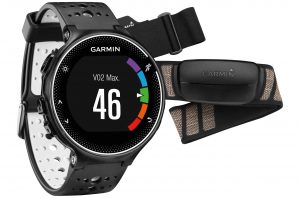
⦾ Policing your DTI ('your' Default Training Intensity) is easy.
⦾ You can program a DTI alarm/ vibration.
⦾ I favour the Garmin or Polar chest strap options.
⦾ Check out bargains on eBay - particularly healthy outdated models.
⦾ Ultimately, all you need is the HR & Stopwatch functionality.
⦾ Youtube is littered with help guides.
Heart Rate Monitors
⦾ (Brad Pamp Coached) DTI Training works the best training with a Heart Rate Monitor.
⦾ HRM's offer repeatable accuracy.
⦾ Sessions can be recorded & saved.
⦾ Policing your DTI ('your' Default Training Intensity) is easy.
⦾ You can program a DTI alarm/ vibration.
⦾ I favour the Garmin or Polar chest strap options.
⦾ Check out bargains on eBay - particularly healthy outdated models.
⦾ Ultimately, all you need is the HR & Stopwatch functionality.
⦾ Youtube is littered with help guides.


CALCULATE YOUR PERFECT EFFORT TRAINING ZONE
Calculating your 'Peak' Training Effort – your Aerobic Threshold
(your Default Training Intensity)
Lifestyle Analysis Method (LAM)
What you need: An honest sense of your lifestyle & current health.
Purpose: Determine your Default Training Intensity (DTI) represented in Heart Rate Beats per Minute.

Questions
a) 183 minus your Age = (This is your Heart Rate in Beats per Minute)
b) If you've suffered major illness within the last five years; minus 6 =
c) You've been largely sedentary over the past two years; minus 3 =
d) You have suffered more than one cold & flu over the past 12 months; minus 2 =
e) You are challenged regularly with muscle or joint inflammatory conditions; minus 3 =
f) You know you're currently challenged with lifestyle stress; minus 3 =
g) You've been largely healthy for two years; add 5 =
h) You've exercised regularly for three years; add 3 = (This number, your HR, is your DTI)
What is your DTI, in heart rate beats per minute? This is your training ceiling! You will not exceed this number until your TimeTrial Test improves by 5%.
Your DTI Zone: From 10 beats lower than your DTI up to your DTI. Eg. 122-132bpm. Other than the first & last 5% of every session is spent in this pocket.
How your training EFFORT should feel (for most sessions)!
✓ You can talk easily when training.
✓ Your [good] form is never challenged.
✓ Your breathing is even and controlled.
✓ You experience zero pain & zero muscle (lactic) burning.
✓ You could work harder if required.
Post-workout feeling!
✓ Knowing you could keep going if your program scheduled.
✓ You experience little sugar, and, or, alcohol cravings.
✓ You sleep soundly – your body temperature cooling quickly post-workout.
✓ You’re loaded with sustained lifestyle energy.
✓ You're more tolerant & interested in work, family or other lifestyle interests.
Signs your aerobic capacity is building nicely!
✓ You’re drawn to nutrient-rich, low volume, whole fresh food.
✓ Without trying or focus, you are drifting towards your ideal weight for life.
✓ You're moving faster at your DTI – your TTT (Timetrial Test) is lowering.
✓ You're free from injury & illness.
✓ You're psyched for your next session.
Typically, you'll experience the following;
✓ You'll feel your DTI is too easy, and you’ll consider Brad Pamp doesn’t know what he is doing.
✓ In weeks 1-3 you'll feel somewhat frustrated with your reduced output, e.g. slower running speed – particularly when running ascents.
✓ You'll re-assess your DTI calculation believing you've calculated incorrectly - you haven't.
✓ You'll think there is no way you’ll hit your race goals at this rate.
✓ You'll possibly find your training intensity somewhat boring.
✓ Commonly, weight loss starts after three weeks of DTI training – with fitting food choices.
TROUBLESHOOTING

The Top 5 outcomes you can expect should you push ‘over’ your DTI before your aerobic system has sufficiently built up the tolerance for harder training or racing!
1) You'll naturally be lead towards ‘pick-me-up’ foods, usually sugar-laden choices.
Premature training & racing over your DTI will favour drawing energy from your 'sugar' tank. This tank (stored in the muscles & liver as glycogen) will require re-filling later in the day. The refilling process will usually trigger behaviour leading one towards refined sugar products. These ‘repeated’ choices, will promote; pancreatic stress, increase exercise-related inflammation (niggles), affect quality sleep, stimulate fat storage and diminish your endurance - the last 30% of your session is commonly compromised.
2) While perhaps not immediately, it's most likely you'll experience joint & muscle niggles, and upper respiratory illness (colds & flu).
The higher (lactic) acidic response from > DTI work lowers your bodies pH. 'Old' joint and tendon injuries commonly resurface, and new ones are likely to appear. Currently, you don’t harbour the strength towards tolerating harder sessions. Injuries crush motivation.
Perhaps the most common result from training prematurely over your DTI is falling to common colds & flu. Stress undoubtedly places the immune system at risk of depletion. Beware!
Tip – if you do choose to pump > DTI be certain to eat lots of greens, lightly salted water, an extra 30 minutes sleep, and a day’s recovery from all training.
3) Yes, you'll burn (metabolise) more energy during the session, but, you'll be tapping into the wrong (energy) tank.
Don’t base your energy ‘out’ in calories based off a training stress score, E.g. HR over a given period of time. Harder work doesn’t mean greater fat loss. DTI training will utilise greater fat metabolism over a 24-hour period, and, influence more fitting food choices.
4) You may feel great for about 90 minutes post-workout, but, then, you'll be mentally, emotionally and physically tired, flat, lethargic for the rest of the day.
> DTI action will result in tiredness, lower your tolerance (towards knuckleheads), interest and communicative energy - this could be a problem. Lifestyle stress commonly throws out more than enough stress-induced hormones like; adrenalin, non-adrenalin and cortisol. Be careful, adding to your total stress by thumping > DTI. DTI training undoubtedly encourages feel-good bio-chemicals like serotonin, dopamine and endorphins.
5) Overstimulated nerves & a higher body temperature will commonly disturb quality sleep.
If possible, I’d avoid pumping > DTI in the evening – particularly in the warmer months, and, certainly if recovery doesn’t allow a cooling pool or surf swim. Ideally, I recommend morning or lunchtime exercise – certainly for > DTI sessions. Your body will sleep best once it has cooled and nerves have desensitised - this takes time.
NOTE – DTI is necessary for some. It is key to improving one’s performance. Be certain you have a solid period of injury & sickness free running under your belt, you’re currently close to your ideal weight, and perform >DTI sessions on more forgiving surfaces like grass, a running track, or a treadmill.
Calculating your 'Peak' Training Effort – your Aerobic Threshold
(your Default Training Intensity)
Lifestyle Analysis Method (LAM)
What you need: An honest sense of your lifestyle & current health.
Purpose: Determine your Default Training Intensity (DTI) represented in Heart Rate Beats per Minute.

Questions
a) 183 minus your Age = (This is your Heart Rate in Beats per Minute)
b) If you've suffered major illness within the last five years; minus 6 =
c) You've been largely sedentary over the past two years; minus 3 =
d) You have suffered more than one cold & flu over the past 12 months; minus 2 =
e) You are challenged regularly with muscle or joint inflammatory conditions; minus 3 =
f) You know you're currently challenged with lifestyle stress; minus 3 =
g) You've been largely healthy for two years; add 5 =
h) You've exercised regularly for three years; add 3 = (This number, your HR, is your DTI)
What is your DTI, in heart rate beats per minute? This is your training ceiling! You will not exceed this number until your TimeTrial Test improves by 5%.
Your DTI Zone: From 10 beats lower than your DTI up to your DTI. Eg. 122-132bpm. Other than the first & last 5% of every session is spent in this pocket.
How your training EFFORT should feel (for most sessions)!
✓ You can talk easily when training.
✓ Your [good] form is never challenged.
✓ Your breathing is even and controlled.
✓ You experience zero pain & zero muscle (lactic) burning.
✓ You could work harder if required.
Post-workout feeling!
✓ Knowing you could keep going if your program scheduled.
✓ You experience little sugar, and, or, alcohol cravings.
✓ You sleep soundly – your body temperature cooling quickly post-workout.
✓ You’re loaded with sustained lifestyle energy.
✓ You're more tolerant & interested in work, family or other lifestyle interests.
Signs your aerobic capacity is building nicely!
✓ You’re drawn to nutrient-rich, low volume, whole fresh food.
✓ Without trying or focus, you are drifting towards your ideal weight for life.
✓ You're moving faster at your DTI – your TTT (Timetrial Test) is lowering.
✓ You're free from injury & illness.
✓ You're psyched for your next session.
Typically, you'll experience the following;
✓ You'll feel your DTI is too easy, and you’ll consider Brad Pamp doesn’t know what he is doing.
✓ In weeks 1-3 you'll feel somewhat frustrated with your reduced output, e.g. slower running speed – particularly when running ascents.
✓ You'll re-assess your DTI calculation believing you've calculated incorrectly - you haven't.
✓ You'll think there is no way you’ll hit your race goals at this rate.
✓ You'll possibly find your training intensity somewhat boring.
✓ Commonly, weight loss starts after three weeks of DTI training – with fitting food choices.
TROUBLESHOOTING
The Top 5 outcomes you can expect should you push ‘over’ your DTI before your aerobic system has sufficiently built up the tolerance for harder training or racing!
1) You'll naturally be lead towards ‘pick-me-up’ foods, usually sugar-laden choices.
Premature training & racing over your DTI will favour drawing energy from your 'sugar' tank. This tank (stored in the muscles & liver as glycogen) will require re-filling later in the day. The refilling process will usually trigger behaviour leading one towards refined sugar products. These ‘repeated’ choices, will promote; pancreatic stress, increase exercise-related inflammation (niggles), affect quality sleep, stimulate fat storage and diminish your endurance - the last 30% of your session is commonly compromised.
2) While perhaps not immediately, it's most likely you'll experience joint & muscle niggles, and upper respiratory illness (colds & flu).
The higher (lactic) acidic response from > DTI work lowers your bodies pH. 'Old' joint and tendon injuries commonly resurface, and new ones are likely to appear. Currently, you don’t harbour the strength towards tolerating harder sessions. Injuries crush motivation.
Perhaps the most common result from training prematurely over your DTI is falling to common colds & flu. Stress undoubtedly places the immune system at risk of depletion. Beware!
Tip – if you do choose to pump > DTI be certain to eat lots of greens, lightly salted water, an extra 30 minutes sleep, and a day’s recovery from all training.
3) Yes, you'll burn (metabolise) more energy during the session, but, you'll be tapping into the wrong (energy) tank.
Don’t base your energy ‘out’ in calories based off a training stress score, E.g. HR over a given period of time. Harder work doesn’t mean greater fat loss. DTI training will utilise greater fat metabolism over a 24-hour period, and, influence more fitting food choices.
4) You may feel great for about 90 minutes post-workout, but, then, you'll be mentally, emotionally and physically tired, flat, lethargic for the rest of the day.
> DTI action will result in tiredness, lower your tolerance (towards knuckleheads), interest and communicative energy - this could be a problem. Lifestyle stress commonly throws out more than enough stress-induced hormones like; adrenalin, non-adrenalin and cortisol. Be careful, adding to your total stress by thumping > DTI. DTI training undoubtedly encourages feel-good bio-chemicals like serotonin, dopamine and endorphins.
5) Overstimulated nerves & a higher body temperature will commonly disturb quality sleep.
If possible, I’d avoid pumping > DTI in the evening – particularly in the warmer months, and, certainly if recovery doesn’t allow a cooling pool or surf swim. Ideally, I recommend morning or lunchtime exercise – certainly for > DTI sessions. Your body will sleep best once it has cooled and nerves have desensitised - this takes time.
NOTE – DTI is necessary for some. It is key to improving one’s performance. Be certain you have a solid period of injury & sickness free running under your belt, you’re currently close to your ideal weight, and perform >DTI sessions on more forgiving surfaces like grass, a running track, or a treadmill.
DESIGNING YOUR WEEKLY TIMETRIAL TEST SESSION
Your Timetrial Test (TTT)
Why?
✓ Confirm your improving fitness and running talent.
✓ Generate ongoing motivation.
✓ Highlight training and health troubleshooting.
✓ Results dictate future training programming.
What!
Option One: An outside testing course.
✓ Design a flattish uninterrupted course over an even and safe terrain.
✓ An out and back course often works best – offering a halfway progress check.
✓ Define the exact start & finish of your course.
✓ Your course must be repeatable, week to week – you don’t want to be standing at lights for 2 minutes during your test.
✓ The distance is irrelevant, so a GPS is not required but can offer useful data (i.e. changes in your pace over varied terrain; and, highlighting your second-half output – hopefully you’re not falling off the pace while holding your DTI).
✓ Ideally, your week to week testing course should have you finishing your first test between 30-50 min

utes. (e.g. 35.45).
The key: you are racing your course. However, you are never allowed to exceed your DTI limit (e.g. 141 bpm). If your HRM offers a policing (DTI) alarm, please take the time to set this up.
Remember, whether you are walking or running, you are racing (yourself). If you exceed your DTI, slow down until your HR returns to your DTI.
Option Two: An inside testing choice;
✓ Using a calibrated treadmill – fix the gradient on 1%, hold your DTI, and stop the stopwatch when you reach, e.g. 5km, or, alternatively, record your distance after 35 minutes, e.g. 4.7km.
✓ Remember your ‘improving’ goal will be to either complete 5km faster or cover a greater distance in 35 minutes at your consistent DTI.
How
✓ Turn on your heart rate monitor – chest straps are the most accurate and reliable.
✓ Ideally, program your HRM to alarm (beep or vibrate) should you exceed your DTI.
✓ Warm-up for 2-5 minutes – a super easy floating walk of shuffle.
✓ Start your stopwatch at the designated starting area.
✓ Rev up your effort to your HR ceiling as soon as possible.
✓ Back off your speed if you exceed your DTI.
✓ Stop your stopwatch at the designated finishing line.
✓ Record your result – texting the Coach.
The following should transpire, over time;
✓ You produce more output at the same intensity - e.g. you finish your test course faster at the same DTI.
✓ If it be necessary, and it is for most, you'll start to lose unnecessary body fat.
✓ Chronic on chronic annoying niggles will 'disappear.
✓ You’ll lower your training core-temperature.
✓ Your (efficient) technique will improve.
✓ The more efficient nose-breathing will take over.
✓ You'll look forward to your next DTI TT.
FYI - An example of the DTI TT in action.
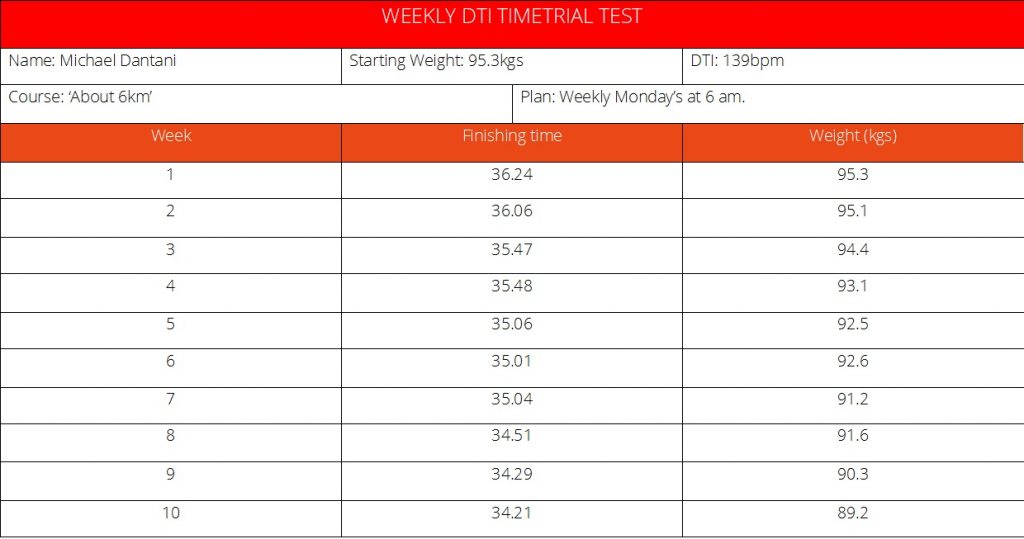
Your results won't always go according to your plan!
Don't be too disappointed if you don't nail a personal best time every week!
The following influences can impinge on your week to week results - more so - by increasing your heart rate.
⋆ Increase in air temperature.
⋆ Running against the wind.
⋆ Increasing lifestyle stress.
⋆ Testing at a different time of the day.
⋆ Looming illness.
⋆ Gut dysfunction, a result of poor food choices.
⋆ Poor sleep.
⋆ Overtraining.
⋆ Changing shoes.
Your Timetrial Test (TTT)
Why?
✓ Confirm your improving fitness and running talent.
✓ Generate ongoing motivation.
✓ Highlight training and health troubleshooting.
✓ Results dictate future training programming.
What!
Option One: An outside testing course.
✓ Design a flattish uninterrupted course over an even and safe terrain.
✓ An out and back course often works best – offering a halfway progress check.
✓ Define the exact start & finish of your course.
✓ Your course must be repeatable, week to week – you don’t want to be standing at lights for 2 minutes during your test.
✓ The distance is irrelevant, so a GPS is not required but can offer useful data (i.e. changes in your pace over varied terrain; and, highlighting your second-half output – hopefully you’re not falling off the pace while holding your DTI).
✓ Ideally, your week to week testing course should have you finishing your first test between 30-50 min

utes. (e.g. 35.45).
The key: you are racing your course. However, you are never allowed to exceed your DTI limit (e.g. 141 bpm). If your HRM offers a policing (DTI) alarm, please take the time to set this up.
Remember, whether you are walking or running, you are racing (yourself). If you exceed your DTI, slow down until your HR returns to your DTI.
Option Two: An inside testing choice;
✓ Using a calibrated treadmill – fix the gradient on 1%, hold your DTI, and stop the stopwatch when you reach, e.g. 5km, or, alternatively, record your distance after 35 minutes, e.g. 4.7km.
✓ Remember your ‘improving’ goal will be to either complete 5km faster or cover a greater distance in 35 minutes at your consistent DTI.
How
✓ Turn on your heart rate monitor – chest straps are the most accurate and reliable.
✓ Ideally, program your HRM to alarm (beep or vibrate) should you exceed your DTI.
✓ Warm-up for 2-5 minutes – a super easy floating walk of shuffle.
✓ Start your stopwatch at the designated starting area.
✓ Rev up your effort to your HR ceiling as soon as possible.
✓ Back off your speed if you exceed your DTI.
✓ Stop your stopwatch at the designated finishing line.
✓ Record your result – texting the Coach.
The following should transpire, over time;
✓ You produce more output at the same intensity - e.g. you finish your test course faster at the same DTI.
✓ If it be necessary, and it is for most, you'll start to lose unnecessary body fat.
✓ Chronic on chronic annoying niggles will 'disappear.
✓ You’ll lower your training core-temperature.
✓ Your (efficient) technique will improve.
✓ The more efficient nose-breathing will take over.
✓ You'll look forward to your next DTI TT.
FYI - An example of the DTI TT in action.
Your results won't always go according to your plan!
Don't be too disappointed if you don't nail a personal best time every week!
The following influences can impinge on your week to week results - more so - by increasing your heart rate.
⋆ Increase in air temperature.
⋆ Running against the wind.
⋆ Increasing lifestyle stress.
⋆ Testing at a different time of the day.
⋆ Looming illness.
⋆ Gut dysfunction, a result of poor food choices.
⋆ Poor sleep.
⋆ Overtraining.
⋆ Changing shoes.






* You've been traveling, particularly changing time zones,
* Sleeping poorly,
* You're mentally & emotionally stressed
* You've been choosing poor food options, particularly refined sugar & excessive complex carbs,
* Your gut's metabolising heavy drinking,
* You feel a cold or flu coming on,
* You're carrying an annoying inflammatory niggle,
* You're simply not psyched for today's listed session.
* Deduct 10 beats off your DTI threshold,
* Extend your warm up by a further 10 minutes,
* Reduce total listed training time by 30%,
* Finish with a few total body stretches (downdog) and breathing exercises.
Confused, contact the coach for guidance.
Above the throat- deduct DTI beats and go.
In the throat - deduct 15 DTI beats and reduce total workout by 40%.
Below the throat - you're out until it clears.
Confused, contact the coach for guidance.







a) learn the four phases of the running stride
b) trial the two proven running 'technique' tools

Remain tall, but relaxed!
Shoulders fall back & down.
Head over hips.
Press pelvis slightly forward.
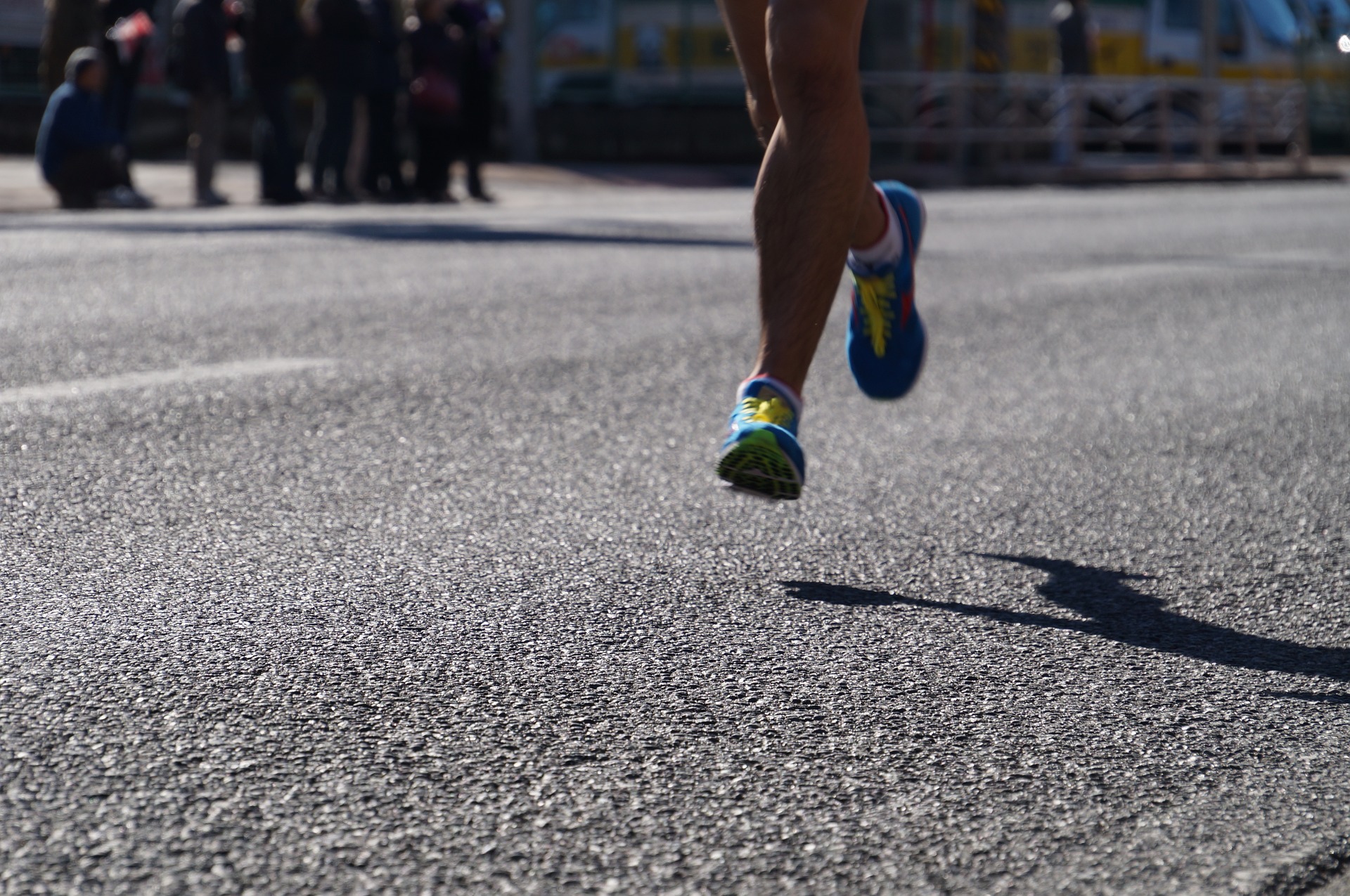
Hold your balanced shape.
Lean forward from your hips.
Let gravity drive movement.
Focus 50 metres ahead.

Think of lifting before you make contact.
Lift your foot off quickly.
Drive your knee forward.
Think barefeet on a hot road.

Allow your foot to fall naturally.
Loading under your hips is best.
Don't concern the foot contact point, e.g. forefoot
Allow natural foot recoil.




ARE YOU DEHYDRATED?

Question
Your answer:
Correct answer:
You got {{SCORE_CORRECT}} out of {{SCORE_TOTAL}}
Your Answers




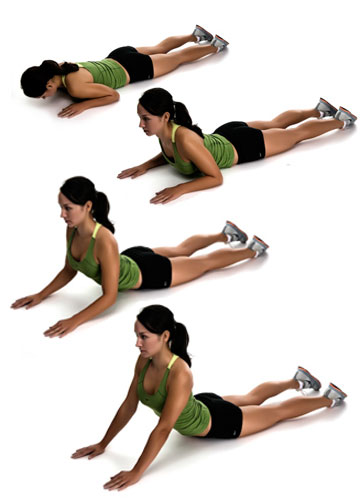








-
What is the 70% Phenomenon?
Let’s say, irrespective of your training commitment, your talent, or interest in your finishing performance (time or placing), I bet you’ll experience at least one of these ‘negative’ and potentially performance-sabotaging emotions around the 70% mark in the race.
⁍ I’m cooked, I can’t keep going!
⁍ I must walk!
⁍ My legs are killing me!
⁍ My energy tank is empty!
⁍ I’m cramping!
⁍ I’m too hot, too cold; I’m out of breathe!
⁍ You go, I’ll see you at the end, I’ve a got a blister!
⁍ Where the hell is the aid station!
⁍ My knee hurts, I don’t care what time I finish.
⁍ I had a cold going in, I’ll walk from here! I'm OK with that!
Then, miraculously, with 1 km to go, and, even more so, 200 metres to go, these same people, who self-diagnosed an impossibility to hold the pace 45 minutes ago, and threatened a necessity to pull out of (the) race, all of a sudden hit a pace Usain Bolt would be pleased with! And, furthermore, within 30 seconds of finishing, pre-nutrition, stretching, or a beer, are walking around boasting how they’ll take 20 minutes off their best time next year! That was awesome I hear them say!
Huh!!!!!! I thought they were physically wrecked, unable to press beyond a meandering dawdle back at the 70% mark of the race distance.
Righto, here’s what’s going on! Between your ears that is! And, again, at the 70% mark of the race.
It’s like this! Your brain, your CEO, is designed to keep you safe at all times. It will drive all your actions to make sure you protect your good health at all costs. If your brain is unsure your health/ fitness can sustain your current effort, it will generate whatever emotion encouraging you to slow down, stop, or pull out. So, what I’m saying is, while you think your legs are cactus, you believe you are well out of energy, you think you’re overheating, the likelihood is, it’s just a brain driven illusory emotion – it’s fake! It’s not true. Your legs are fine, you have plenty of juice left, and your temperature is stable. In actual fact, you’re all good to keep going at this current pace.
Now, here’s the thing. While your brain is designed to protect you from death, you can expect negative, and physically limiting emotions kicking in well before you are actually in trouble. Meaning, when you first experience signs & symptoms, learn to dismiss or dissociate from these deceptive emotions. Ignore these preliminary negative emotions and keep powering on, whatever that pace is relative to YOU.
So why the 70% mark of the full race distance?
Your brain maps out at the start of the race how it will, sort of, pace your race, again, so you don’t hurt yourself. Now, around the 70% mark, relative to your fitness, you’ve already logged a good chunk of the race. The problem being, damn it, you’ll still got a good chunk to go. So, your brain is reluctant and somewhat confused about letting you continue at your current pace. This why most marathon runners (the top & the developing) will tell of ‘hitting the wall’ at the 30km mark! Most Ironman triathletes tell of falling apart at the 15km of the marathon, having seemingly leaked out a 4km swim, a 180km bike ride and feeling good for the first 15kms of at the marathon.
Then, for the first time City to Surfer, the 1/2 marathon runner, and the ironman athlete, with just 3% of the race remaining, the brain now knows it can get home safely and at pace! So everyone lifts! The leg pain vanishes, the cramps are gone, sugar balance spikes, and good form returns.
So, what I’m saying is! Tap into what top athletes thrive on! Dissociate from physical-limiting emotions and keep up the clip. If you can get yourself to the say, the 90% mark, adrenalin will do the rest.
Here are my top 5 tips when dissociating from negative illusory emotions.
-
1. Throw water over your face! This offers instant relaxation & feel-good peace. It’s also a shock. Not like an ice bucket, but you know what I mean. For a moment you’ll forget about how crappy you feel. It also confirms to your brain there is plenty of hydrating water about should you need it!
-
2. Sugar! Yep, from Sports Drinks to Energy Gels. We now know your brain only needs a smidgen of sugar recognition to fire up your feel-good energy! Don’t go throwing buckets of sugar down your throat, your gut may respond poorly.
-
3. Tunes! Undoubtedly, there are loads of confirming research, brain waves can only focus on one thing at a time. Get yourself some douff and crank it up around the 70% mark.
-
4. Race! While not for everyone, pick out someone around you, and beat them! Watch them, pace them, take em on!
-
5. Belief! This should be listed #1. Ya gotta believe me, you really do have more left! Yes, of course, pace yourself smartly, but please ignore the soft out-clause that first hits around the 10km mark!
-




